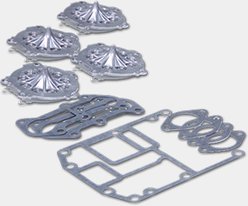Ask Gerald Swindle if he wants to fish a dock and he’ll tell you he’d rather just skip it. But don’t lose interest. The Mercury Pro Team member and Bassmaster Elite Series pro is not going anywhere. Rather, he’s all about maximizing what he considers tremendous opportunity waiting beneath a dock.
Skipping a jig, Texas rig or other lure under a dock is one of Swindle’s favorite tactics.
“I love to skip docks, but finding the sweet spot is the key,” Swindle said. “Each dock offers several targets, and each part of a dock can represent a high-percentage area during different times of the year.
“The key to dock fishing is understanding where, why and when the fish position and how to make that high-percentage cast.”
Seasonal Starting Points
While there are no guarantees and hard rules in bass fishing, Swindle starts his dock-fishing approach based on seasonal patterns.
For instance, in summer, he’ll start fishing the deeper, shadier end of a dock. The center of a dock is optimal during the prespawn and postspawn, as staging fish like to hold midway between where they’re coming from and where they’re going to.
In spring, spawning bass and other shallow fish set up around the back corners of docks and the space beneath the catwalks leading from shore to the dock. This inner zone comes into play again in fall, when Swindle knows the bigger fish often form small “wolf pack” feeding groups.
“The fish want to get the shallowest for feeding, and that back corner with the catwalk is where the shade creates a bigger perimeter where they can cruise and feed,” he said.
Fish may move throughout the day or react to weather changes, but Swindle said these general guidelines give you a good starting point.
Made In the Shade
Along with seasonal positioning, Swindle stressed the importance of paying attention to the dock’s shadiest sections and understanding that this will evolve throughout the day. As sun angles change, so must your positioning.
“You need to be watching the shade and where the sun is so you can make the highest-percentage casts possible,” Swindle said. “Know the depth and start where shade and deep water intersect. The hotter the weather, the more shade matters.
“And watch the roof pitch. It will cast a shadow (beyond the dock). Never underestimate the area out in front of a dock.”
The Right Lakes for Dock Fishing
Any lake with docks probably has a dock bite, but just how good it will be depends on many factors, including other cover in the lake.
"I think the best dock lakes are the ones that don’t have a lot of structure and cover,” Swindle said. “Lake Guntersville has so much grass that docks are not usually a major player. Usually, the more grass you have, the less they’re around docks.
“For example, on Lake Champlain, there’s not much cover up shallow, so those largemouth will get on those few docks that are up there with shade. Another one would be somewhere like Lake Norman, where it’s a clean body of water with no grass and not many stumps, so the only shady cover they have is under those big boat docks.”
Know the Neighborhood
Location, location, location. It’s not just a relevant real estate phrase. As Swindle explains, this notion also helps define dock potential.
“If someone put me on a lake and said pick one dock any time of year, I’m going to pick a dock on a point,” he said. “In any region, a dock on a point will always be key. Fish can move up to feed and have deep water close by.”
Exact positioning on the lake depends on what time of the year Swindle’s fishing. In the early spring, he wants a point close to the channel side of a reservoir creek because the fish use the channel to move up into creeks on their way to spawning areas. Conversely, fall puts a premium on points located on the flatter side of a creek, as fish roam these shallower areas to ambush baitfish.
As for dock style, more structure means more inhabitable space. Past that, Swindle likes a dock with fixed pilings when fish are relating to the bottom (spring, mostly). During the times of the year when fish are apt to suspend – postspawn through fall – he prefers floating docks.
“With floating docks, I like the old foam floats because they collect that algae, so you see baitfish and bream gathering around them,” Swindle said. “The newer plastic floats will get there eventually, but the old-school foam is hard to beat.”
Deliver the Goods
Swindle does most of his dock work with a 3/8-ounce Buckeye Lures G-Man Ballin’ Out 2 jig and a craw-style trailer. He skips the jig with a 7-foot, 2-inch 13 Fishing Meta series baitcasting rod that’s built with a good balance of soft tip and plenty of backbone for extracting big dock fish.
Swindle stresses to not rely on “lucky shots” when skipping a dock. Cover water and fish the jig all the way back from where you cast it to the boat.
“A bad habit I see a lot is where people want to cast, fish the jig real fast and reel it back in,” Swindle said. “If you take time and make a great cast, fish it back out. If I skip my jig way back in there, I’m going to fish it all the way out. I’m not just going to throw it in there and let it go to the bottom. A lot of times, fishing my jig all the way out tells me where the fish are located.”
To see more from Gerald Swindle, follow him on Instagram, Facebook and YouTube.




















